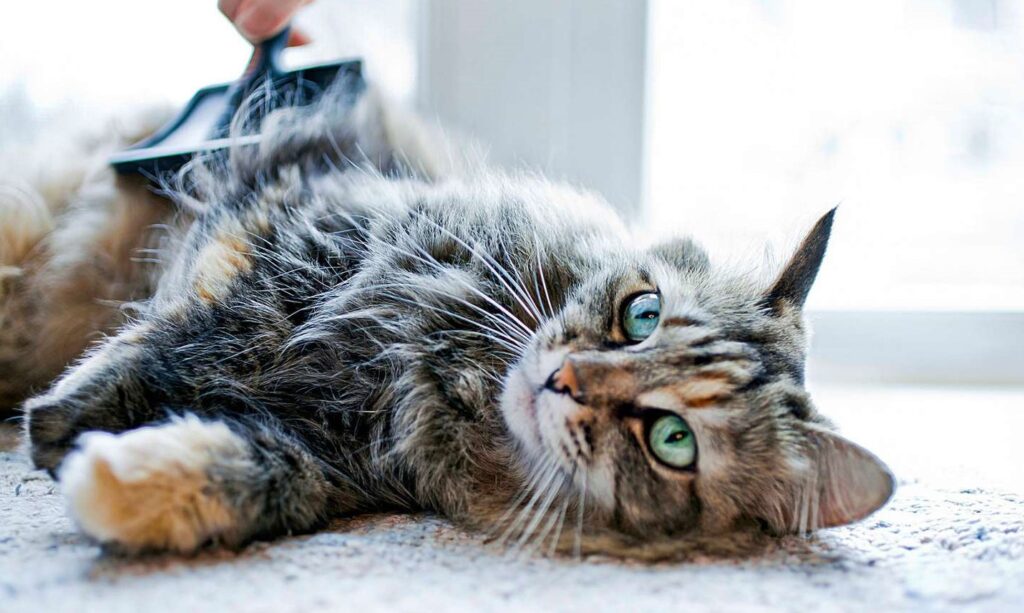
Essential Cat Care Tips
Cats are not just pets; they are beloved members of the family who bring joy, companionship, and warmth into our lives. Ensuring their health and happiness requires understanding their unique needs and behaviors. This guide covers all the essential cat care tips you need to keep your feline friend purring contentedly.
Proper Nutrition
A cat’s diet is foundational to its health. Providing the right nutrition helps maintain a healthy weight, supports their immune system, and ensures overall well-being.
Choosing the Right Food
Selecting the right cat food involves understanding the different types available: dry, wet, and raw diets. Each has its benefits, and a balanced approach often works best. Dry food is convenient and good for dental health, while wet food provides necessary hydration. Raw diets can be beneficial but require careful handling to prevent bacterial contamination.
Balanced Diet
Cats are obligate carnivores, meaning their diet must primarily consist of meat. A balanced diet includes high-quality protein sources, essential fatty acids, vitamins, and minerals. Look for foods that list meat as the first ingredient and avoid those with excessive fillers like corn and soy.
Feeding Schedule
Establishing a regular feeding schedule helps regulate your cat’s metabolism and prevents overeating. Most adult cats do well with two meals a day. Kittens, on the other hand, need more frequent feedings to support their rapid growth.
Treats and Supplements
While treats are great for training and bonding, they should only make up a small portion of your cat’s diet. Opt for healthy, low-calorie treats and avoid those high in sugar or artificial ingredients. Supplements, such as omega-3 fatty acids, can support skin and coat health, but always consult with your vet before adding them to your cat’s diet.
Hydration
Cats often do not drink enough water, which can lead to urinary tract issues. Ensure your cat has access to fresh water at all times. Some cats prefer running water, so consider investing in a cat water fountain. Including wet food in their diet can also help increase their water intake.
Regular Vet Visits
Routine veterinary care is crucial for early detection of potential health issues. Schedule annual check-ups for your cat, even if they appear healthy. Regular visits allow your vet to monitor your cat’s health, administer vaccinations, and provide preventative care.
Grooming Your Cat
Brushing and Bathing
Regular brushing helps reduce shedding and prevents matting. Most cats groom themselves, but brushing assists in removing loose hair and distributing natural oils. Bathing is not usually necessary unless your cat gets particularly dirty or has a skin condition. Use cat-specific shampoos to avoid irritating their skin.
Nail Clipping
Trimming your cat’s nails prevents them from becoming overgrown and reduces the risk of injury. Start slowly, clipping just the tips of the nails, and use cat-specific clippers. If you’re unsure, ask your vet to show you the proper technique.
Ear and Eye Cleaning
Regularly check your cat’s ears for signs of wax buildup, dirt, or infection. Clean their ears with a vet-approved solution and a soft cloth. Keep their eyes clear of discharge by gently wiping them with a damp cloth.
Litter Box Maintenance
Choosing the Right Litter Box
The right litter box should be easily accessible and comfortable for your cat. The size and design depend on your cat’s preferences and any physical limitations they may have. Open or covered boxes are available, and the choice depends on whether your cat prefers privacy or ease of access.
Best Types of Litter
There are various types of cat litter, including clumping, non-clumping, biodegradable, and silica gel. Clumping litter is popular because it makes cleaning easier, but some cats prefer the texture of other types. Experiment to find out what your cat likes best.
Cleaning Routine
Scoop the litter box daily to keep it clean and odor-free. Complete litter changes should be done at least once a week, with the box itself cleaned with soap and water. A clean litter box encourages use and prevents inappropriate elimination behaviors.
Creating a Safe Environment
Cat-proofing Your Home
Ensure your home is safe for your cat by removing any toxic plants, securing loose wires, and keeping harmful substances out of reach. Cats love to explore, so make sure there are no small spaces they can get trapped in.
Outdoor Safety
If your cat ventures outdoors, ensure they are safe by providing a secure, enclosed space. Outdoor cats should be microchipped and wear a collar with identification. Supervised outdoor time or a catio can offer a safe way for your cat to enjoy the outside world.
Playtime and Exercise
Importance of Physical Activity
Regular play and exercise are vital for maintaining a healthy weight and preventing boredom. Cats are natural hunters, and interactive play stimulates their instincts.
Best Toys for Cats
Provide a variety of toys to keep your cat engaged. Wand toys, laser pointers, and puzzle feeders are excellent for interactive play. Rotate toys regularly to keep them interesting.
Creating an Enriching Environment
An enriching environment includes scratching posts, climbing trees, and perches where your cat can observe their surroundings. Mental stimulation can be provided through puzzle toys and training sessions.
Socialization and Interaction
Bonding with Your Cat
Building a strong bond with your cat involves spending quality time together. Gentle petting, grooming, and interactive play strengthen your relationship.
Introducing New Cats or Pets
Introducing a new cat or pet to your household requires patience. Start by keeping them in separate spaces and gradually allow them to interact under supervision. Use positive reinforcement to reward calm behavior.
Understanding Cat Behavior
Recognizing Stress and Anxiety
Cats express stress and anxiety in various ways, including excessive grooming, hiding, or aggression. Identifying and addressing these behaviors early can prevent more serious issues.
Common Behavioral Issues
Common issues include litter box problems, scratching furniture, and aggression. Address these behaviors by providing appropriate outlets, like scratching posts, and consulting with your vet if the behavior persists.
Frequently Asked Questions
How often should I feed my cat?
Adult cats generally do well with two meals a day, while kittens need more frequent feedings to support their growth. Establish a regular feeding schedule to maintain their health.
How can I stop my cat from scratching furniture?
Provide plenty of scratching posts and pads to redirect their behavior. Use positive reinforcement to encourage them to use these alternatives. Cover furniture with deterrents like double-sided tape if necessary.
What vaccinations does my cat need?
Core vaccinations include rabies, feline distemper, and feline herpesvirus. Your vet may recommend additional vaccines based on your cat’s lifestyle and health.
How do I know if my cat is sick?
Signs of illness include changes in appetite, weight loss, lethargy, vomiting, diarrhea, and changes in litter box habits. If you notice any of these symptoms, consult your vet immediately.
Can I train my cat?
Yes, cats can be trained using positive reinforcement techniques. Use treats and praise to reward desired behaviors and be patient and consistent.
How can I help my overweight cat lose weight?
Work with your vet to develop a weight loss plan that includes a balanced diet and regular exercise. Avoid free-feeding and measure your cat’s food portions to ensure they are eating the right amount.
Caring for a cat involves understanding their unique needs and behaviors. From proper nutrition and grooming to creating a safe and enriching environment, these cat care tips will help ensure your feline friend remains healthy and happy. By investing time and effort into their care, you can enjoy many joyful years together.
